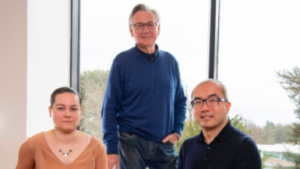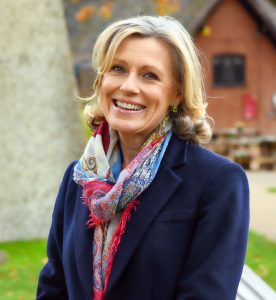Philanthropy Right Now:
The Power of Community
‘Philanthropy Right Now’ is a periodical column for Beacon Collaborative by Marie-Louise Gourlay, Managing Director of Europe for The Philanthropy Workshop.
The power of community: a topic that’s risen time and again over the last 18 months. The twin pandemics of Covid-19 and the profound racial injustice that spurred the Black Lives Matter movement simultaneously tore us apart and flung us together.
Who were we when shut in our homes, hooked to the news? Was our community our household, our neighbourhood, our country? Or had our community expanded – a single community bound by a global pandemic, with a collective urgency to tackle the world’s issues?
For me, the notion of community has always been more a feeling than a tangible set of parameters. Dictionary definitions all feel overly passive, such as “the condition of sharing or having certain attitudes and interests in common”. It’s precisely that passivity that we wrestle with when we think of philanthropy. When does a shared attitude or interest progress from being passive to being active? And it’s fair to say that community can and does influence behaviour change.
Since Covid began, we’ve turned to one another in ways never seen before – seeking and sharing advice, advocating for trust-based approaches, and even informing one another about strategies which have proven successful – and those which have failed. It led me to question whether community is only formed out of necessity; when each of us needs something from one another in order to survive. With greater urgency, and an increased openness to the value of cross-border learnings and solutions, it seems this necessity has allowed the door to philanthropic collaboration to creak open.
Knowledge comes in many parts – and community is one of those parts. It’s often not the obvious interactions that are most fruitful – but those that are serendipitous, or fleeting, that lead us to explore, to challenge, to question and to innovate. For when we stop innovating, we become redundant. The last 18 months have taught us that having a community of ever-evolving thoughts and ideas, of support and of critical challenge, truly is irreplaceable.
At The Philanthropy Workshop, whilst our community was previously a long-standing, strictly enforced ‘no pitch zone’, increasingly members are seeking opportunities to co-fund, putting aside their individual strategies and recognising the role that collective action can play in multiplying impact, as well as acknowledging the power which must be ceded to enable that.
Long-term behavioural shifts take time. But the hope is that the movement towards collaboration and away from isolationism will continue in the direction that it has started. Reflecting further, I wonder whether the active shift we ultimately make will take philanthropy from being a community to being a movement, in order to achieve the changes we seek in the world.
We flourish when we’re part of something bigger than ourselves. We should be asking ourselves not only what we gain, but what we contribute. For there is a place in philanthropy for everyone.
Marie-Louise Gourlay is the Managing Director of Europe for The Philanthropy Workshop. Find out more about The Philanthropy Workshop’s activity here.













